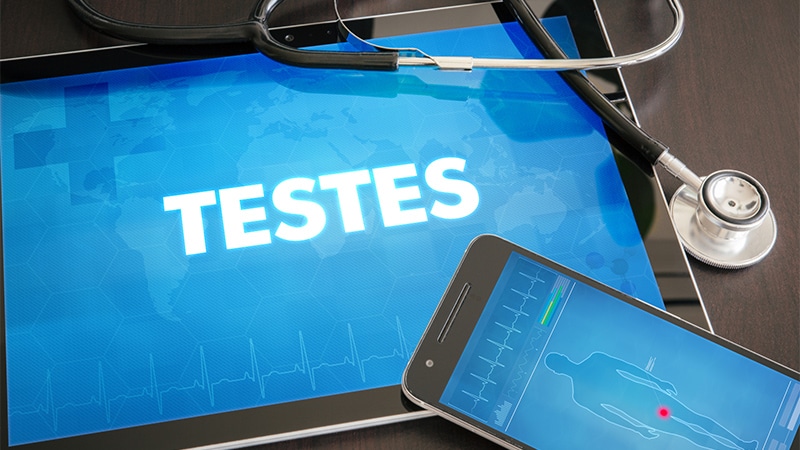Researchers published the study covered in this summary on researchsquare.com as a preprint that has not yet been peer reviewed.
Key Takeaways
-
The results suggested that early prolonged hormonal therapy is advisable in all patients with cryptorchidism to increase the speed of testicular descent to the scrotum achieved by surgery, and thereby maintain adequate sperm quality in adulthood.
Why This Matters
-
European guidelines say that boys with undescended testes should receive treatment before they turn 18 months old to minimize their long-term risk of cosmetic, fertility or malignancy complications.
-
The primary treatment options are hormonal medical therapy and surgery but neither alone has proven sufficient.
-
Hormonal therapy remains controversial in the current literature, the authors said.
Study Design
-
This was an observational, longitudinal, multicenter cohort study that included 192 patients with cryptorchidism (156 monolateral, 36 bilateral) enrolled during 1987-1997.
-
The cohort included 29 boys treated with immediate surgery alone (group A), 93 treated with hormone therapy alone (group B), 51 who initially received hormonal therapy followed by surgery when testis descent was incomplete (group C), and 19 boys whose parents refused treatment (group D).
-
Hormonal therapy consisted of serial injections (two or three times a week) to deliver a total weekly dose of 1000 units human chorionic gonadotropin (hCG) for 6 weeks, followed by a second treatment cycle a month after the end of the first cycle.
Key Results
-
The median age of the boys was 1.1 years old at the time of diagnosis and initial treatment, and they were a median 17 years old at follow-up.
-
At follow-up, the researchers found no significant differences among the groups for the following hormones: inhibin B, follicle-stimulating hormone, or testosterone.
-
Differences in sperm concentration, progressive sperm motility, and normal sperm morphology differed significantly between those receiving hormones (with or without surgery) and those not treated (all P < .0001).
-
Those treated with hormones alone had the best results for sperm concentration and progressive sperm motility.
-
The researchers found similar levels of normal sperm morphology and testicular volume regardless of whether patients had hormonal therapy alone or a combination of hormones and surgery.
-
Patients who had received surgical treatment alone had normal testicular volume, but worse sperm characteristics compared with boys who received hormonal therapy with or without surgery.
-
The results showed no significant differences between patients with monolateral and bilateral cryptorchidism, probably because of the modest sample size.
-
Seminal assays revealed that 57% of the boys in group A had normal sperm concentration and normal sperm motility, but a lower rate (52%) of normal-shaped spermatozoa.
-
In group B, 91% of the boys had normal sperm concentration and motility, while none had abnormally shaped spermatozoa.
-
The patients in group C showed intermediate results: 71% had normal sperm concentration and 87% had normal sperm motility, and none had abnormal-shaped spermatozoa.
-
In Group D, only one patient had normal sperm concentration with considerably worse testes volume and other seminal parameters compared with boys in the other three groups. Almost all the patients in this group (16 of 19) had incomplete testes descent into the scrotum.
-
Grade I-II adverse events of hormonal therapy, such as abnormal growth of the penis, skin erythema, penile erections, abnormal growth of pubic hair, augmented skin pigmentation, and mood alterations (primarily aggressiveness) occurred in 67 (72%) of 93 patients in group B and 40 (78%) of 51 in group C (78%). Patients in group A had no adverse events.
-
No patient required suspension or interruption of hormonal treatment.
-
No patients showed signs or suspicion of testicular malignancies during follow-up examinations nor on scrotal ultrasound scans.
Limitations
-
This observational study followed patients who received one of four different treatment options. The number of patients who received each option varied depending on the decisions of the patients’ families.
-
Each patient’s family decided on his treatment, but patients who were not fully responsive to hormonal therapy also underwent surgery.
Disclosures
-
The study received no funding.
-
None of the authors had disclosures.
This is a summary of a preprint research study “16 Years Follow-up Evaluation of Immediate vs Delayed vs Combined Hormonal Therapy on Fertility of Patients with Cryptorchidism: Results of a Longitudinal Cohort Study,” written by researchers at the University of Pisa, Italy, and other centers in Italy on Research Square provided to you by Medscape. It has not yet been peer reviewed. The full text of the study can be found on researchsquare.com.
For more news, follow Medscape on Facebook, Twitter, Instagram, YouTube, and LinkedIn

